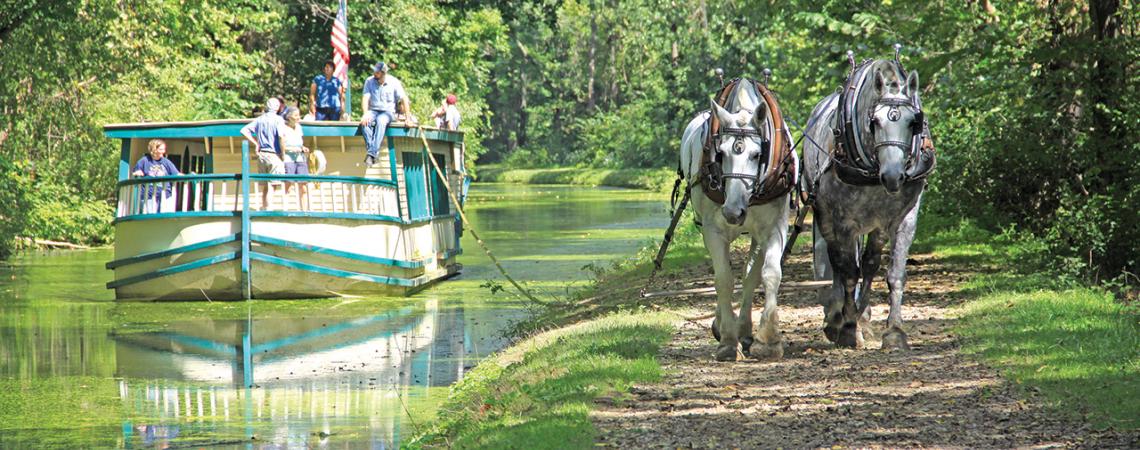Canal boat ride at historic Roscoe Village in Coshocton (photo by Chip Gross)
Only a few years ago, when Buckeye Lake in central Ohio was being drawn down for dam repair, workers made a historic find: Hidden in those murky depths was a sunken canal boat called the Black Diamond.
“It’s the first archaeological-documented canal boat discovery in Ohio,” says Andy Sewell, historian with Columbus-based Lawhon and Associates, an environmental consulting firm associated with the dam project.
Ohio’s historic canal era spanned nearly a century (1825 to 1913), but its heyday was the 23 years from 1827 to 1850. Described as “the ditch that brought the world to the wilderness,” canals literally transformed the Buckeye State from a struggling backwoods economy to an agricultural and industrial powerhouse.
There actually were two canal systems: the Miami & Erie Canal in western Ohio, and the Ohio & Erie Canal in the central and eastern part of the state. The narrow, ribbon-like waterways — the Interstate Highway System of its time — connected the Ohio River with Lake Erie, providing a way for farmers to access larger markets with their products.
Salt pork, lard, iron ore, coal, pig iron, whiskey, flour, lumber, and food staples were shipped south to New Orleans or east to New York and other large cities. Some cargo made it even as far as Europe. As a result, business boomed and life was good.
Canal boats also hauled passengers, and the going fee of less than two cents per mile included meals and lodging. A typical trip from Cleveland on Lake Erie to Portsmouth on the Ohio River could take more than three days — that same trip today requires only about four hours by automobile.
Thousands of Irish and German immigrants — who didn’t seem to like each other much — provided most of the workforce that built Ohio’s canals, mostly using simple picks, shovels, and wheelbarrows. It was backbreaking work, and water-related diseases such as malaria were rampant.
“It’s been said that one worker perished for each mile of canal built,” says Jim Vetter, a canal boat interpreter at the historic John Johnston Farm near Piqua. With more than 1,000 miles of canals in Ohio, that added up to a lot of suffering and death.
The canals were built to exacting standards: 26 feet wide at the bottom, 40 feet wide at the waterline, and a minimum of 4 feet deep. These dimensions provided room for two canal boats to pass one another. The boats measured 60 to 80 feet long and 14 feet wide and could carry up to 80 tons of cargo. They were pulled by one to three mules or horses walking a towpath beside the canal.
Because the 10-foot-wide towpath ran along only one side of the canal, protocol was such that the upstream boat had priority. The downstream boat was supposed to lower its towline into the water and let the other boat pass. But canal men, being the rough characters they were, often settled the question of who lowered their line with a fistfight.
The first train whistle that sounded in Ohio marked the beginning of the end for the canals. Railroads could haul freight and passengers faster than canal boats, and also ran year-round; canals were forced to shut down operation several months each winter because of ice. The final blow was the statewide spring flood of 1913 that damaged many of the canals beyond repair.









